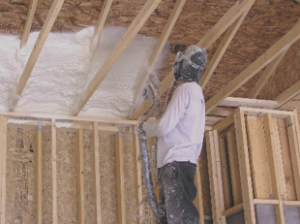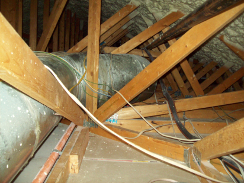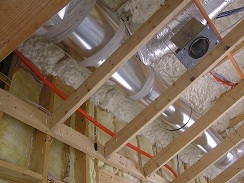 Insulating a house attic with spray polyurethane foam (SPF) insulation on the underside of the roof deck is the best way in almost all cases to insulate an attic. This is especially true if the air distribution system (duct system) is located in the house attic. The benefits an unvented attic with cathedralized foam insulation are numerous; however in an existing home this approach is expensive compared to traditional insulation. This article explains how to make informed decisions about how to convert a house attic from traditional insulation to an unvented attic with spray foam insulation.
Insulating a house attic with spray polyurethane foam (SPF) insulation on the underside of the roof deck is the best way in almost all cases to insulate an attic. This is especially true if the air distribution system (duct system) is located in the house attic. The benefits an unvented attic with cathedralized foam insulation are numerous; however in an existing home this approach is expensive compared to traditional insulation. This article explains how to make informed decisions about how to convert a house attic from traditional insulation to an unvented attic with spray foam insulation.
- PHOENIX METRO (623) 939-3329
- TUCSON (520) 200-2958
- PRESCOTT (928) 445-3828
- PHOENIX METRO (623) 939-3329
- TUCSON (520) 200-2958
- PRESCOTT (928) 445-3828





